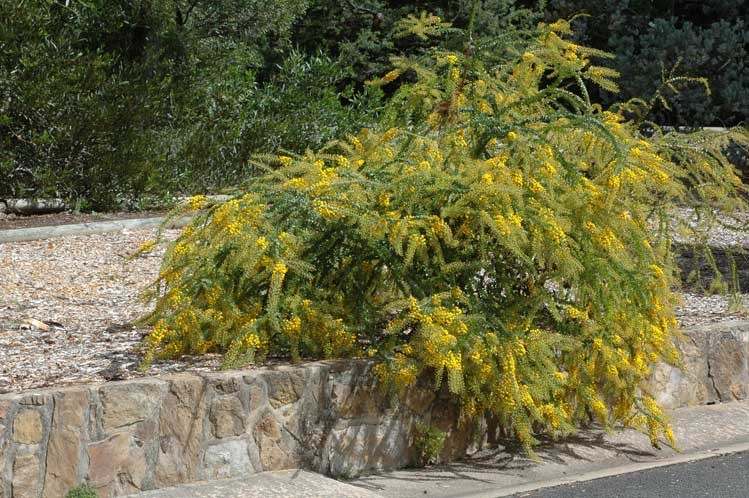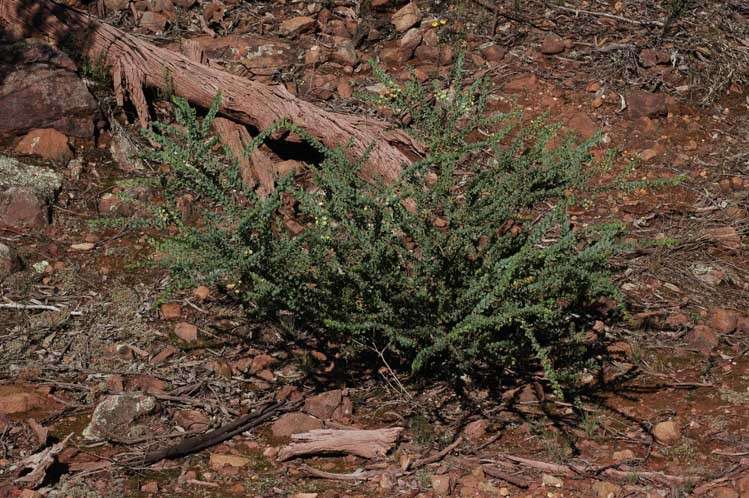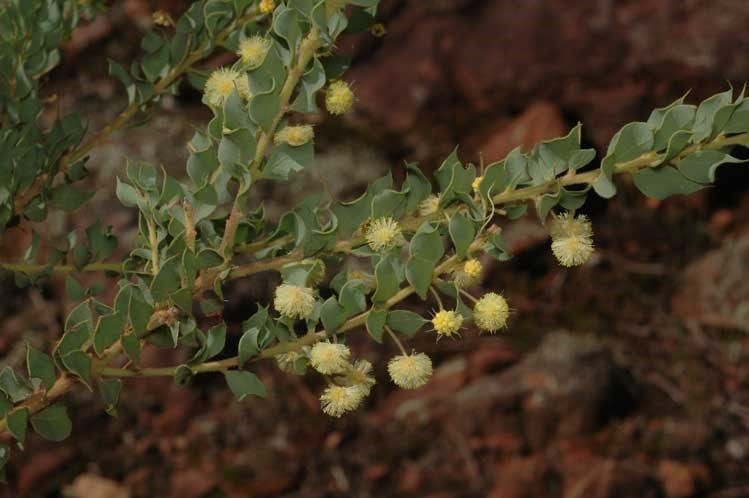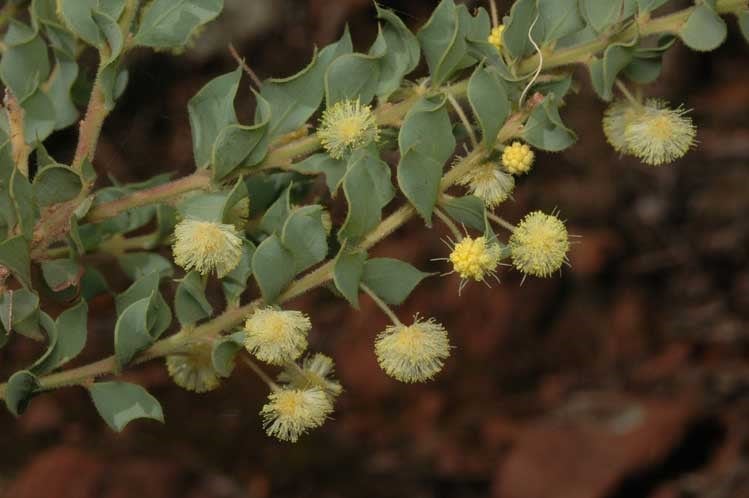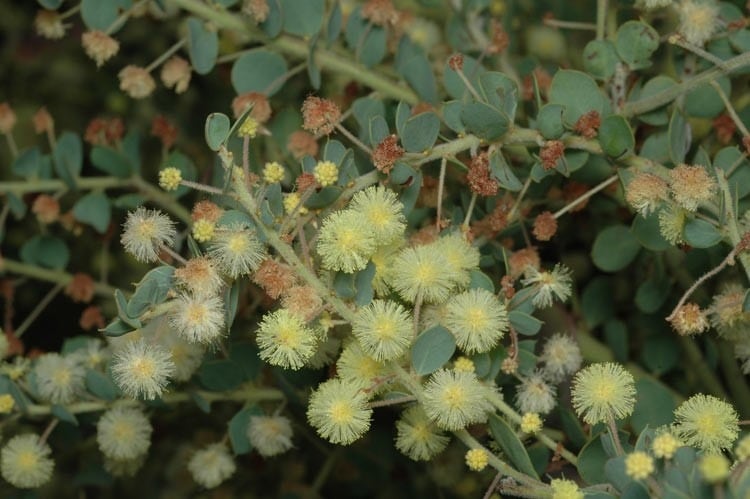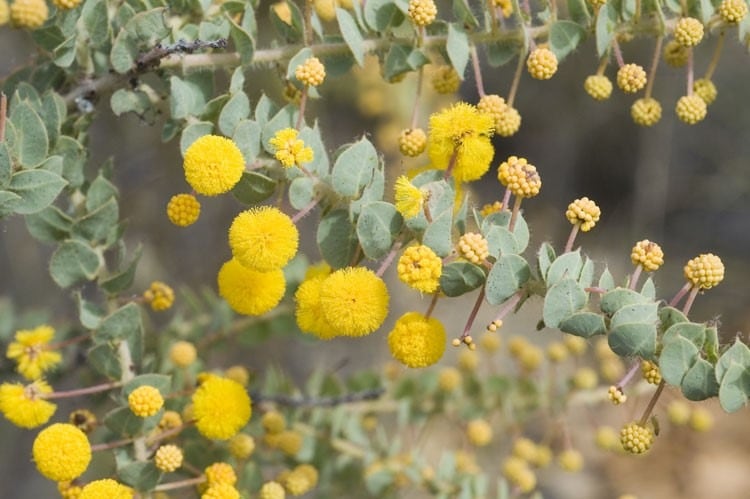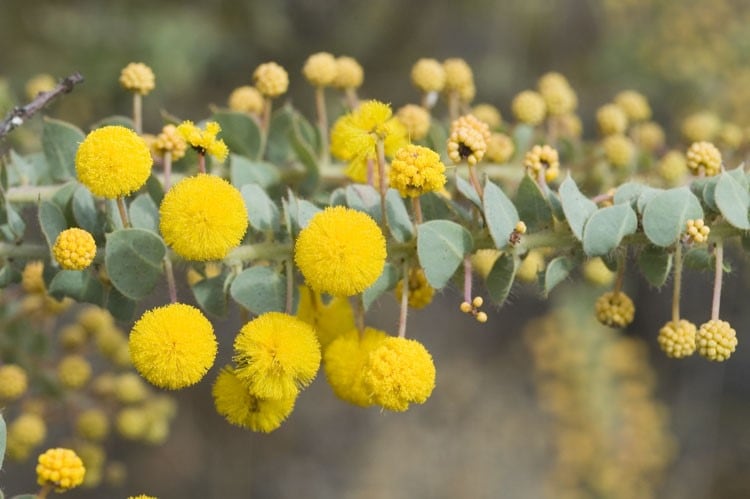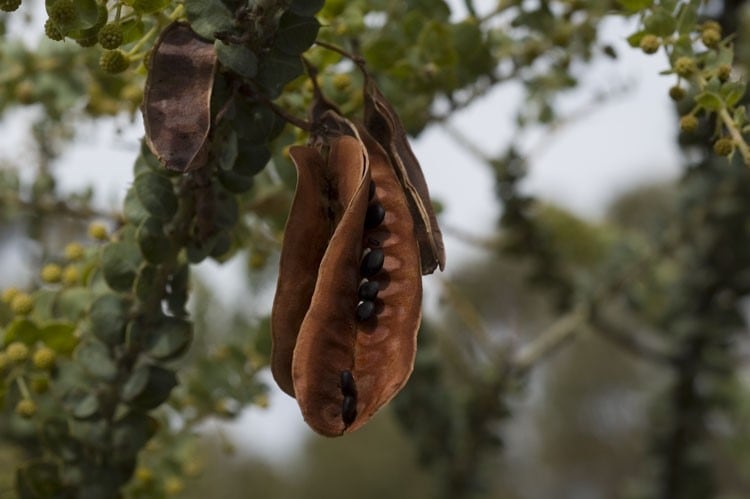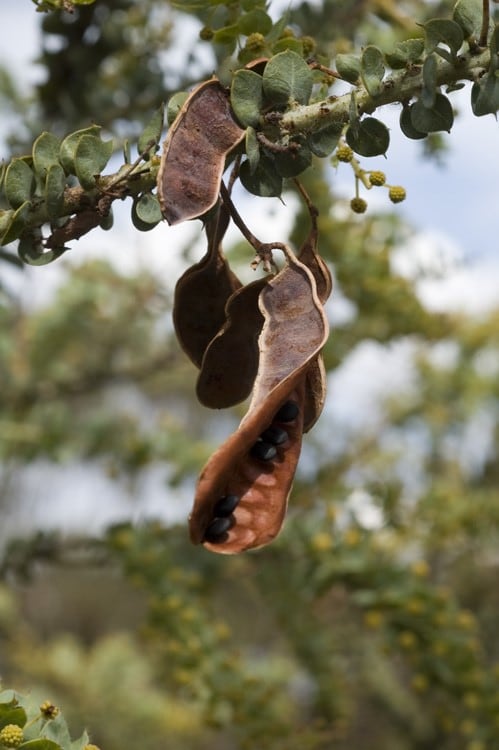Acacia cremiflora B.J.Conn & Tame
WATTLE
Acacias of Australia
Family
Fabaceae
Distribution
This species occurs in N.S.W. from near Uarby (in the north) and Elong Elong, extending south through Mudgee to Yerranderie, with the most westerly populations to the east of Parkes, and once collected from between Harden and Young.
Description
Usually a bushy shrub, less than 1 (–2) m high, with (5 or) 6 or more primary branches diverging at ground level, sometimes lower stem unbranched; branches mostly erect, occasionally with a few arching branches. Branchlets ribbed, sometimes terete, brown to green, smooth, hairy. Phyllodes with lamina coplanar with branchlet or rotated c. 20º–75º (–90º) from branchlet, flat or convex, elliptic to broadly elliptic or slightly orbicular, occasionally obovate-elliptic, (7–) 9–14 (–17) mm long, (4–) 5–9 (–14) mm wide, l:w = 1.3–1.6, dull, light to dark green-grey or green, sparsely hairy or glabrous except for hairs confined to pulvinus or extending to margin and midrib; base oblique and asymmetric, acute or obtuse, sometimes truncate; margin mostly undulate; apex acute to obtuse and mucronate; gland at or to 1 mm above base, obscure or with obvious rim. Inflorescences with inclined to patent peduncles, 7–16 (–18) mm long, as long as or slightly longer than floral phyllodes, sparsely hairy; heads 7–8 mm diam., 18–26-flowered, pale yellow to cream-coloured. Corolla lobe apices sparsely to moderately hairy. Pods oblong to broadly oblong, straight or sometimes curved, 40–80 mm long, 15–20 (–30) mm wide, thickly coriaceous, dull brown to dark brown-black, occasionally slightly pruinose; margin flat or occasionally slightly undulate.
Habitat
The more northerly populations tend to grow mostly on stony clayey loams in woodlands and open woodland-grasslands, whereas the more southerly populations occur in gravelly pale yellow to brown clay or sandy loam soils in Eucalyptus woodlands.
Specimens
N.S.W.: 23 km W of Dunedoo, on Dunedoo–Dubbo road, B.J.Conn 3816 & T.M.Tame (NSW); 2 km W of Gantawang Bridge on Cudgegong R., B.J.Conn 3828 & T.M.Tame (NSW); 16.6 km ESE of Eugowra Police Stn, R.G.Coveny 12081 & P.D.Hind (NSW); Cobbra cemetery, c. 17 km W of Dunedoo, T.M.Tame UH5 (NSW); Lookout Rd, Mullions Ra., T.M.Tame 3982 (NSW).
Notes
The branchlet hairs are somewhat reflexed to patent, straight or wavy, 0.2–0.6 mm long, and white to fawn-coloured on young shoots. Inflorescence hairs are patent to slightly reflexed and 0.3–0.4 mm long. The corolla lobe apices have hairs 0.1–0.6 mm long.
This species is similar in phyllode shape to A. aureocrinita. However, it is distinguished by the deep yellow (golden) hairs, and usually more densely hairy and slightly smaller phyllodes. It is also similar to A. undulifolia, but differs from this species in its lower, much-branched bushy habit, smaller phyllodes to 17 mm long (A. undulifolia 13–35 mm long) and indumentum of branchlets usually slightly reflexed or hairs patent. The hairs of the branchlets of A. undulifolia are mostly patent or slightly inclined.
FOA Reference
Data derived from Flora of Australia Volumes 11A (2001), 11B (2001) and 12 (1998), products of ABRS, ©Commonwealth of Australia
Author
B.J.Conn, T.M.Tame
This identification key and fact sheets are available as a mobile application:
URL: https://apps.lucidcentral.org/wattle/
© Copyright 2018. All rights reserved.
